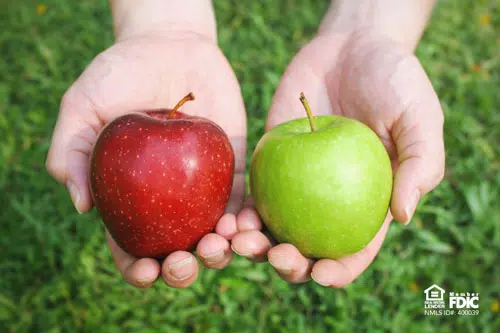You might already have a checking account for depositing your paychecks, buying groceries, and handling daily expenses. A savings account is an excellent choice for emergency funds, saving money, or earning more interest.
Opening a savings account at the same bank where you have your checking account is often easier. Since different savings accounts offer various features, it is best to shop around.
Savings and checking accounts have insurance to protect you in case your bank or credit union fails. The FDIC insures banks, and the National Credit Union Association insures credit unions for up to $250,000. As you shop around, verify that the financial institutions you are researching have this insurance.
Determine Your Savings Goal
If you are saving money for a specific purpose, you must decide how long it will take to reach your goal. For instance, you might be looking to save up for a down payment on a house that you want to buy in two years. Alternatively, you may want to have money for a vacation that’s six months down the road.
Or maybe you want to save some money by a specific time. In that case, you can make regular automatic transfers to your savings.
Compare the Interest Rates
Different types of savings accounts could offer different interest rates. Sometimes, you may have to keep a minimum balance or potentially pay an account fee. For other savings accounts, you may have little to no access to your money for some time.
Look at these interest rates and ensure you understand what you must do to receive the interest. Some accounts may offer a higher interest rate for a high monthly balance. They could substantially reduce your interest if you drop below their minimum monthly balance requirement.
Get the Right Type of Savings Account
Whatever your savings goal is, you should pick an account type that fits your goals and your financial lifestyle. Three different types of savings accounts have distinct features and benefits. Here are the most common types of savings accounts:
Regular Savings Account—Most financial institutions and online-only banks offer these savings accounts. They allow you to make up to six monthly transfers or withdrawals without a fee. You can usually open a regular savings account with little money. The interest rate is generally lower than that of other savings accounts but higher than that of a checking account that earns interest.
Money Market Accounts – MMDAs are similar to regular savings accounts in many ways. They also have transaction limitations. The difference is that you earn more interest on these accounts. Some money market accounts also give you access to checking functions, such as check writing and ATM access for cash withdrawals.
You typically carry a higher balance to receive a higher interest rate. There could be account fees or a loss of interest if you fall below the minimum balance. MMDAs should be an option only if you know you can maintain the high balance requirement.
Certificate of Deposit—CDs usually offer the highest interest rates among savings accounts. Banks hold your funds longer, setting them aside for a pre-determined period known as the term, which could be a few months up to several years.
If you are considering a CD, be sure you can keep the money for an extended period. Withdrawing the money before the term ends will result in paying a penalty or forgoing part of your interest.
If you are ready to open a savings account, call 800-677-6272 with questions or to get started.




